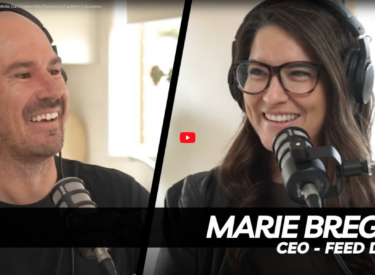Setting your business up for success
It’s never too early to start thinking about your digital marketing strategy for the year ahead. After all, the sooner you start, the more prepared you’ll be to take advantage of emerging trends and capitalise on new opportunities. If you’re not sure where to start, don’t worry – we’ve got you covered. In this blog post, we’ll outline everything you need to know to create a successful digital marketing strategy for 2023.
Where do I start?
First things first, let’s have a look at your overarching business goals: do you want to grow sales or expand to new locations, get more clients or become the number one “oodie” company in the world? No matter what those goals are it’s all about what your business needs. The marketing goal becomes the residual of the business goal and it is super important to differentiate these two.
You might say: “We want our brand to be as popular as Coca-Cola”. And that’s where your marketing team comes in handy. They are all ears, ready to transform your business goal into all cool marketing digits. They are digital marketing translators that help you understand if you are on track or really falling off the wagon with putting too much pressure on your business.
So what is this “translation” all about? The number one thing that we do in marketing is setting SMART goals, they are not really too “smart” – they are simply specific, measurable, achievable, realistic and time-bound. And to simplify all of that: you need to be clear, able to measure any goal and align it with certain timing. Let’s dive in:
1. Set SMART Goals
The first step in any successful digital marketing strategy is setting SMART goals. SMART stands for Specific, Measurable, Achievable, Relevant, and Time-bound. In other words, your goals should be clear and concise, with measurable milestones and a realistic timeline for completion.
Your overall business goal might be: “get more people introduced to our business”, so one of the digital marketing SMART goals might be: “increase website traffic by 25% within six months”.
That’s how you can check yourself:
S – Specific part would be: “increase website traffic”
M – Measurable: “increase by 25%”
A – Achievable: within our current budget we certainly can do it
R – Relevant: it does coincide with our business goal
T – Time-bound: “six months”
Keep in mind that your goals will vary depending on your specific business objectives.
2. Choose the Right KPIs
Once you’ve set your SMART goals, it’s time to choose the right KPIs (key performance indicators) to measure your progress. Your KPIs should be closely aligned with your goals so that you can check whether or not you’re on track to meet them.
Some common digital marketing KPIs include website traffic, conversion rate, bounce rate, average time on page, and social media engagement. Again, the right KPIs for your business will vary depending on your specific goals and objectives.
Going back to our example goal: “to increase website traffic by 25% within six months” – one of the KPIs to measure against this goal can be “monthly website visits” or “returning vs new visitors”.
3. Determine Your Target Audience
Another important consideration when creating your digital marketing strategy is your target audience. Who are you trying to reach with your marketing efforts? What are their demographics? What are their interests? What are their needs and wants? Answering these questions will help you create targeted content that resonates with your audience and drives results.
4. Select Key Dates
Once you’ve answered these questions, it’s time to circle up some key dates for your digital marketing campaigns. Key dates can include holidays (such as Black Friday or Cyber Monday), industry events (such as trade shows or conferences), or product launches (if you have a new product or service). Planning around these key dates will help ensure that your campaigns are timely and relevant – two important factors in driving results.
5. Select Effective Platforms
Last but not least, it’s important to choose the right platforms for your digital marketing campaigns. The platforms you select should be based on where your target audience spends their time online. For example, if you’re targeting millennials, Snapchat and Instagram would be good choices. If you’re targeting Baby Boomers, Facebook would be a better option.
Keep in mind that you don’t have to limit yourself to just one platform – in fact, using multiple platforms can actually improve results by giving you more chances to reach your target audience. However, it’s important not to spread yourself too thin; focus on quality over quantity when choosing which platforms to use.

Creating a successful digital marketing strategy can seem like a daunting task, but it doesn’t have to be. By following the steps outlined in this blog post, you can develop a comprehensive plan that will help ensure your business meets its goals in 2023 – and beyond! In case you are stuck, feel free to contact our team and see how we can help you create a custom-tailored digital marketing strategy for your business!



